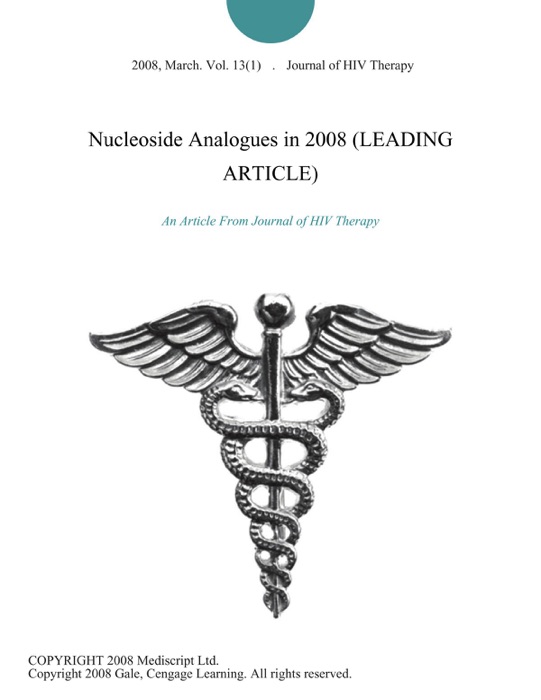(Download) "Nucleoside Analogues in 2008 (LEADING ARTICLE)" by Journal of HIV Therapy " Book PDF Kindle ePub Free

eBook details
- Title: Nucleoside Analogues in 2008 (LEADING ARTICLE)
- Author : Journal of HIV Therapy
- Release Date : January 01, 2008
- Genre: Health & Fitness,Books,Health, Mind & Body,
- Pages : * pages
- Size : 208 KB
Description
INTRODUCTION Nucleoside/nucleotide reverse transcriptase inhibitors (NRTIs) have been the backbone of antiretroviral therapy since the advent of HIV treatment (Table 1). The evolution of HIV therapy has seen the use of this class of drugs as monotherapy [1], dual therapy [2,3] and triple therapy, in combination with non-nucleoside reverse transcriptase inhibitors (NNRTI) [4-6] and with protease inhibitors (PI) [7,8]. The last decade has witnessed the rise and fall of individual drugs as we have learnt more about both their efficacy against HIV and their individual toxic effects. Nucleoside-sparing regimens have been studied for over a decade [5,9-14], and have several potential advantages, as they avoid nucleoside analogue toxicity, and preserve this class of drug for later lines of therapy. However, this is at the cost of reduced potency in most studies compared to more conventional comparator regimens, and increased toxicity, principally hyperlipidaemia. In contrast, nucleoside-only regimens have also been studied over a similar period [15-17]. The ACTG 5095 trial showed that Trizivir (TZV; ZDV/3TC/ABC) was significantly less likely to suppress viral load to 50 copies/ml than either TZV/EFV or Combivir/EFV at both high and low viral loads. Non-thymidine triple NRTI combinations (for example ABC/3TC/TDF or ddI/3TC/TDF) have also been shown to have high virological failure rates [18,19]. For these reasons, there are now few indications for triple NRTI regimens. One advantage of triple nucleoside analogue regimens is that drug-drug interactions are relatively limited in comparison to NNRTI- or PI-based regimens, and they may thus have a limited role in patients who need to take interacting drugs (e.g. rifampicin for the treatment of tuberculosis). In these circumstances, Trizivir/TDF may be a preferable option, as it has been shown to be a more potent regimen than Trizivir alone [20,21].
Post a Comment for "(Download) "Nucleoside Analogues in 2008 (LEADING ARTICLE)" by Journal of HIV Therapy " Book PDF Kindle ePub Free"